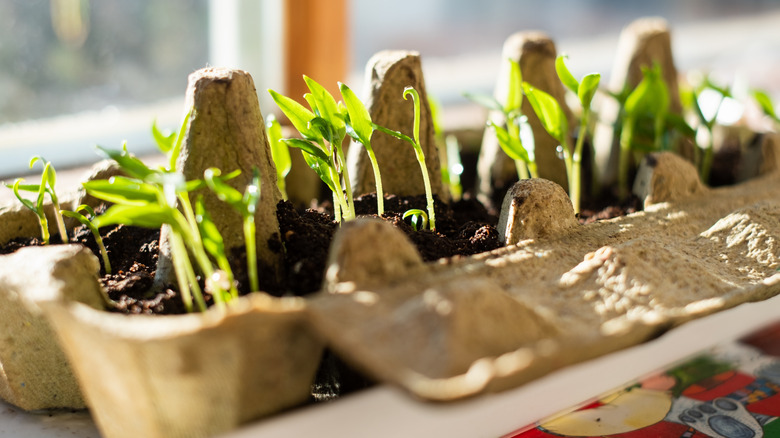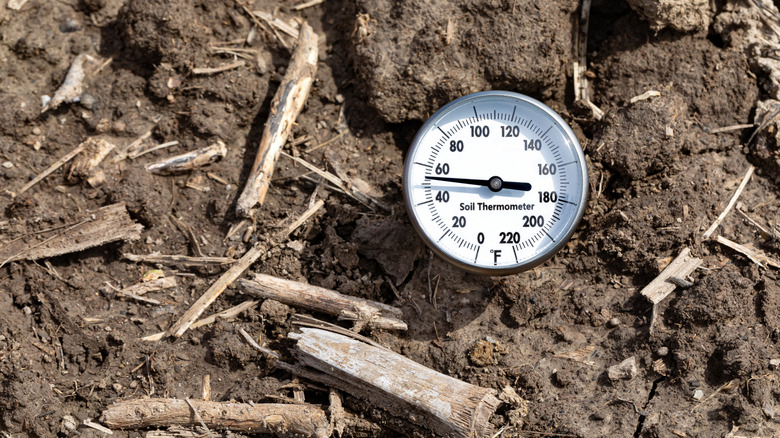The Best Time To Transplant Seedlings When Using Egg Cartons
We may receive a commission on purchases made from links.
When you're ready to start new plants in your garden, there are plenty of great ways to start seeds indoors, and growing your seedlings in egg cartons is one of the best. Not only do you use something you likely already have in your house, but many paper egg cartons are also compostable so you can plant them directly into the ground. If you're new to this process, knowing when to transplant the seedlings to your garden can be tricky. The best time is when there's no threat of frost and once the roots show at the bottom of the drip tray.
This is a great way to repurpose old egg cartons with minimal effort — you only need to poke drainage holes in each cup so your seeds won't become waterlogged. Fill your cups with seed starter soil, then add a few seeds to each cup and water till the soil is moist. Plan to use a drip tray to catch the resulting water. Let your seeds sit in an area with plenty of light and warmth for four to five weeks. You'll also need to pay attention to their growth until it's time for the next steps of moving your seeds into the ground.
Transplanting your seedlings in egg cartons
Starting seedlings in egg cartons requires patience and attention to detail. You want to ensure that the seedlings start growing roots but don't leave them until their roots start circling, as this inhibits the plants' growth. Prepare the ground by raking it before transplanting, to remove any big clumps of dirt and anything else that might stifle the seedlings' progress. When moving your egg carton seedlings into the ground, if they're growing in a paper egg carton, you can plant the whole thing directly in the soil — but remove the seedlings from the carton if it's made of styrofoam or plastic.
As well as waiting to transplant your seedlings after the last frosts, consider the soil temperature to be certain your plants have optimal growing conditions. Oregon State University Extension advises waiting until the weather is at least 50 degrees Fahrenheit for cool-season crops and 65 to 70 degrees Fahrenheit for warmer-weather crops like tomatoes. To measure the soil temperature directly, you can use a tool like a Taylor Soil Testing Thermometer to make sure your seedlings have the best chance at growing into full plants.

